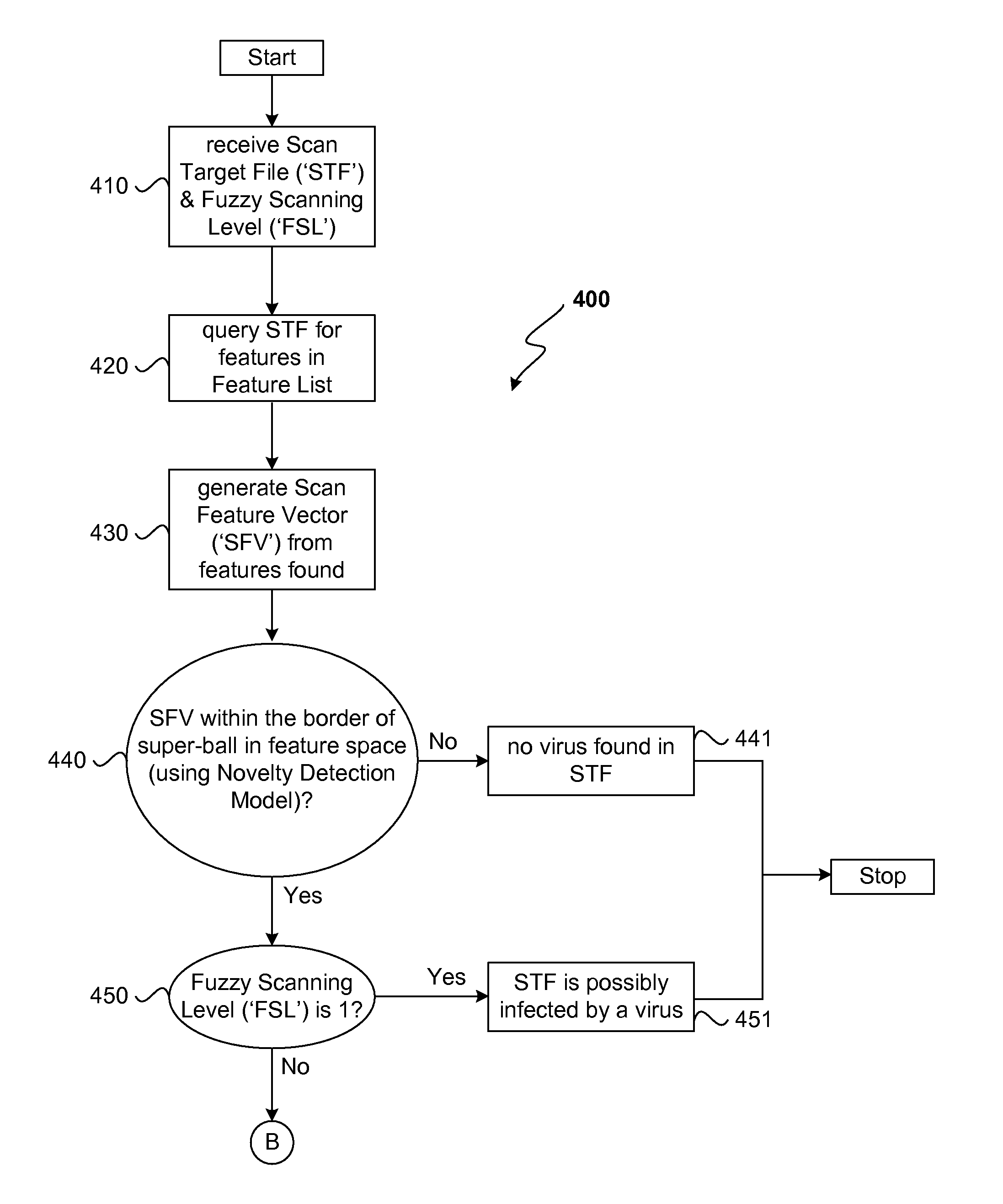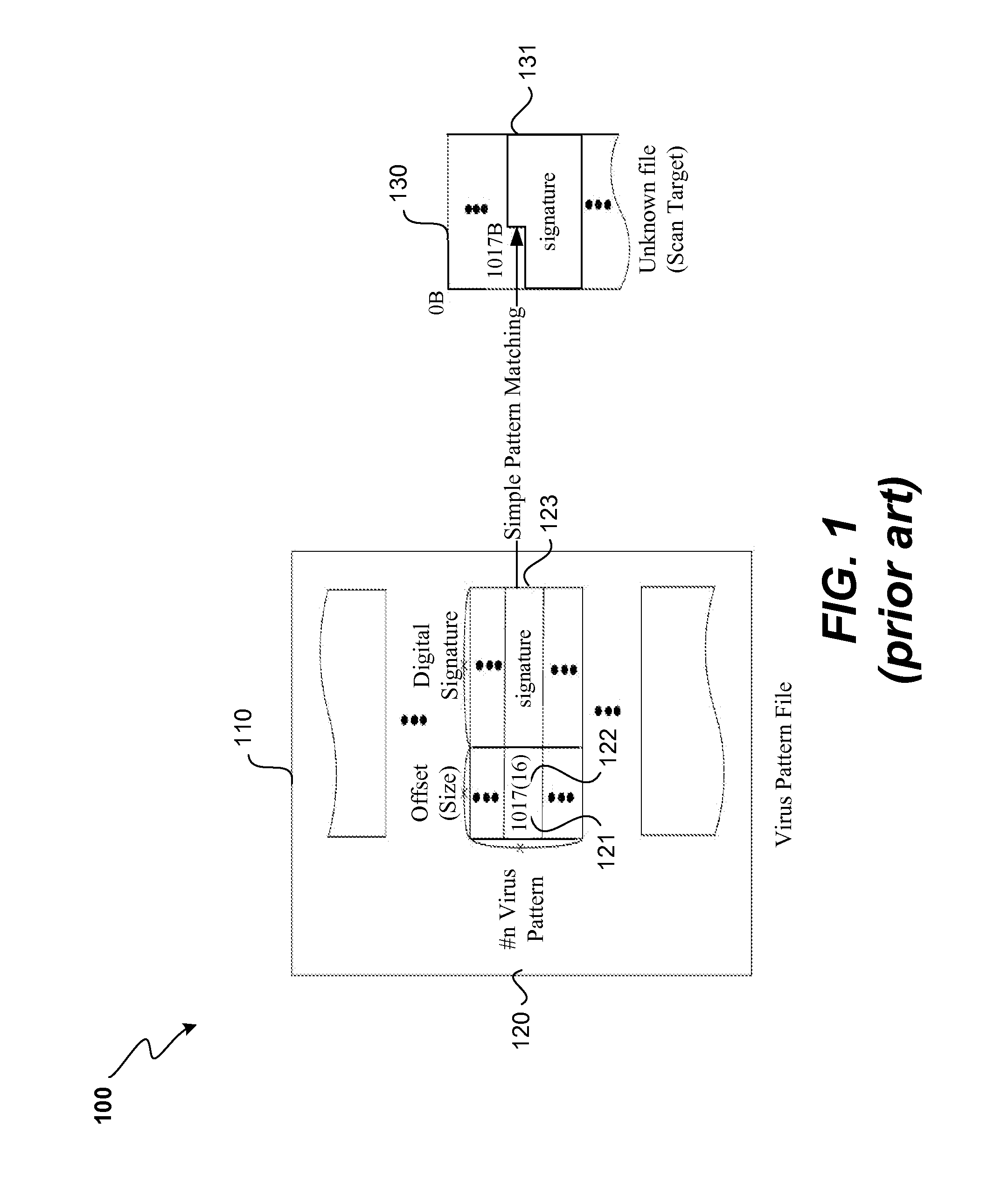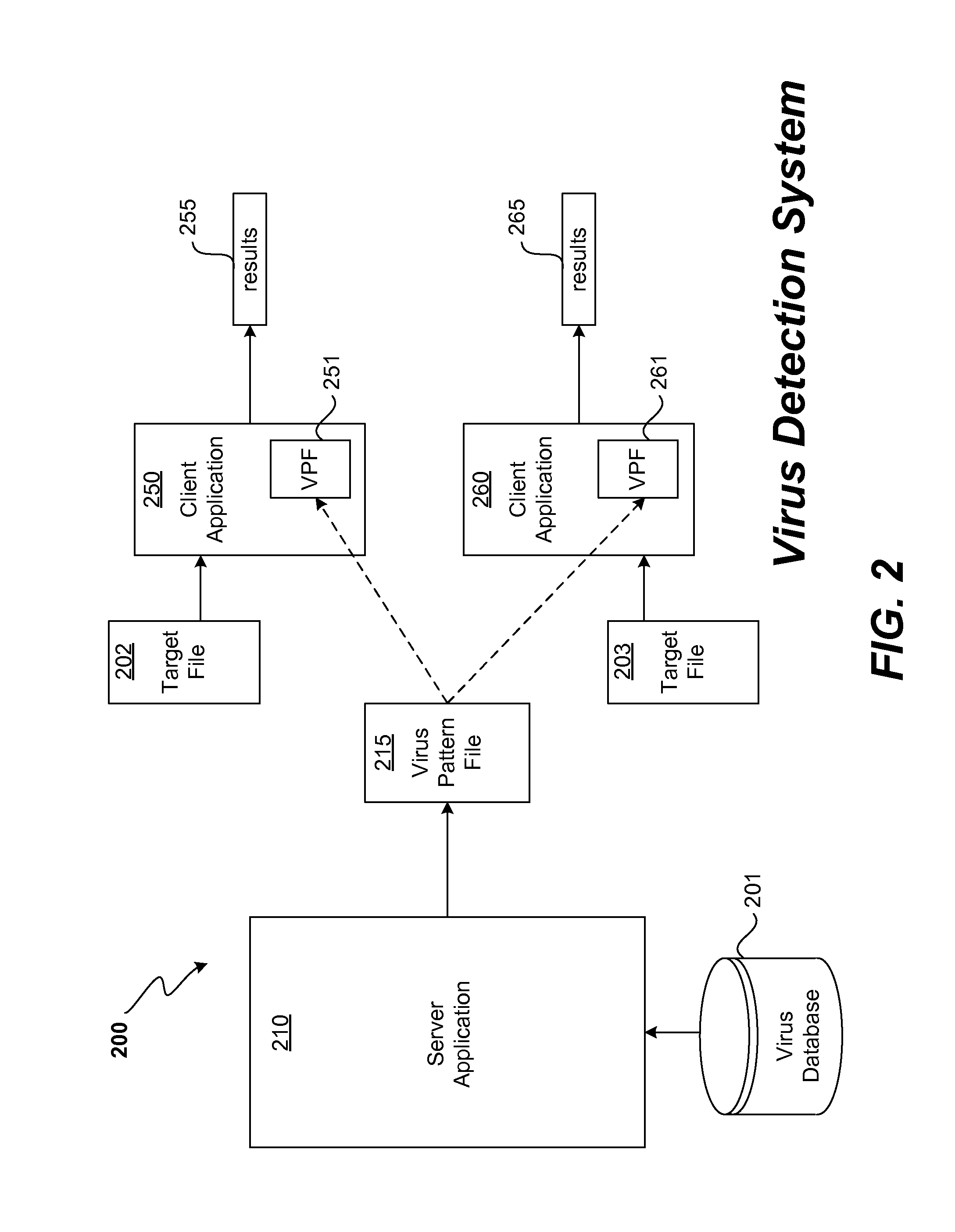Two stage virus detection
a virus detection and two-stage technology, applied in the field of virus detection technology, can solve the problems of increasing the size of the virus pattern file proportionally, and not using the virus detection application, so as to improve the efficiency of virus detection
- Summary
- Abstract
- Description
- Claims
- Application Information
AI Technical Summary
Benefits of technology
Problems solved by technology
Method used
Image
Examples
Embodiment Construction
[0018]In the following description, numerous specific details are set forth in order to provide a thorough understanding of the present invention. It will be apparent, however, to one skilled in the art, that the present invention may be practiced without some or all of these specific details. In other instances, well known process steps have not been described in detail in order not to unnecessarily obscure the present invention.
[0019]The present invention relates generally to methods and arrangements for improving a virus detection application. More particularly, the present invention improves the performance of a virus detection application by minimizing the number of slow pattern matching operations performed when scanning an unknown file (i.e. a scan target file) for viruses. In a preferred embodiment of the present invention, the virus scanning procedure is divided into three different “fuzzy” scanning levels. The first fuzzy scan level determines whether the target file is su...
PUM
 Login to View More
Login to View More Abstract
Description
Claims
Application Information
 Login to View More
Login to View More - R&D
- Intellectual Property
- Life Sciences
- Materials
- Tech Scout
- Unparalleled Data Quality
- Higher Quality Content
- 60% Fewer Hallucinations
Browse by: Latest US Patents, China's latest patents, Technical Efficacy Thesaurus, Application Domain, Technology Topic, Popular Technical Reports.
© 2025 PatSnap. All rights reserved.Legal|Privacy policy|Modern Slavery Act Transparency Statement|Sitemap|About US| Contact US: help@patsnap.com



